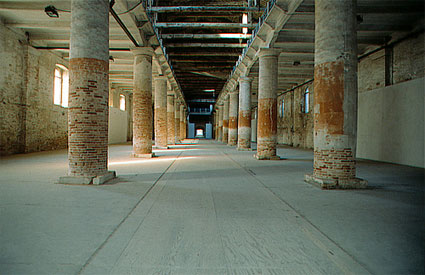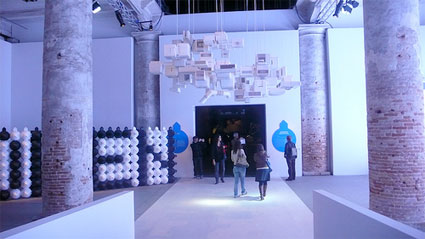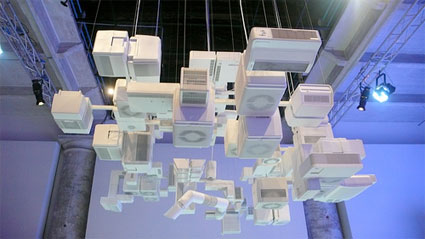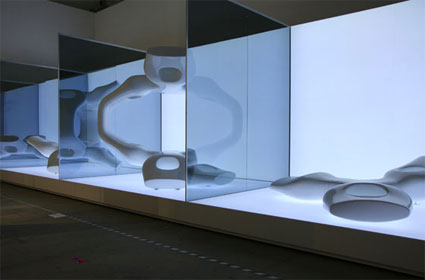Why do i keep reading that there’s too much art at the ongoing Biennale of Architecture in Venice? Why this rush to call ‘art’ anything that doesn’t match expectations? The projects i’ve seen in Venice last weekend shouldn’t be defined as art (at least not very good art), maybe some specialists wouldn’t even qualify them as ‘proper architecture’ but most of these works have the virtue to bring forward some relevant debates and concepts, either by proposing experimental alternatives to the brick and mortar approach or by attempting to broaden and renew the discourse on architecture. In many cases, the participants speculate on future architecture by taking a look back at the avant-garde of the ’60s, deliberately going back and forth, hoping that we’ll be smart enough not to stop -once again- at the ‘is this art?’ level.
The critiques are directed mostly at the projects of the architecture studios that fill the Corderie, a spectacular exhibition space located within the Arsenale, Venice historic naval yards. Built in 1303, restored in 1579 and 1585, this 6400 sqm surface used to host the manufacture of hawsers, cables and thick ropes.
 Corderie, Arsenale. Courtesy: Fondazione La Biennale di Venezia
Corderie, Arsenale. Courtesy: Fondazione La Biennale di Venezia
During the architecture biennale what you can see inside the Corderie looks indeed much more like installations than buildings, each of them answers Aaron Betsky’s -this year’s Curator of the Biennale- request to look beyond buildings in order to discuss and question architecture. In his view, ‘architecture is not building. Architecture must go beyond buildings because buildings are not enough. They are big and wasteful accumulations of natural resources that are difficult to adapt to the continually changing conditions of modern life.’

Here’s a first couple of ideas i particularly liked at the Corderie:
An Te Liu‘s Cloud is an eye-catching assembly of dozens of air purifying devices, the kind you kind find almost anywhere in the world. They filter, sterilize and purify the air, getting rid of what we regard as harmful: bacteria, allergen, dust, unpleasant smells. They respond to our modern desire to live in a highly hygienic and technology-controlled environment.
In his essay The Architecture of Well-Tempered Environment (1969), architecture critic Reyner Banham put the development of technologies (electricity, air conditioning) ahead of the classic account of structures, eventually asking the question ‘Why have buildings at all?’ Sophisticated technologies, in his view, would one day allow us to survive without the traditional forms of shelter which we have come to take for granted. Our world could become entirely controlled by ‘bubbles’, with our needs met through various systems and devices.
 An Te Liu, Cloud
An Te Liu, Cloud
The Cloud’s air-conditioning appliances carve out their own invisible space in the exhibition space. Their trooping into an overhead armada evokes their sci-fi roots, reminding us that what we both desire and fear is a squeaky clean future.
 Asymptote, Prototyping the Future: Three Houses for the Subconscious. Image from archiportale
Asymptote, Prototyping the Future: Three Houses for the Subconscious. Image from archiportale
Conceived and manufactured digitally, Asymptote‘s contribution to the biennale is Prototyping the Future: Three Houses for the Subconscious. Three round and elegant fiberglass objects is the output of a computer-based research on what buildings might look like if we were to put them through a wind tunnel testing, in the same manner as we do with cars and planes. The shape of the very static building would recall ideas of high velocity, acceleration and dynamism.
Asymptote’s work, like the one of many of this biennale participants, deliberately calls up the architectural experimentations of the period that went from the 1960s to the early 1980s, when the boundaries between architecture, engineering and art were fuzzier than they are today. Prototyping the Future explore buildings under a more emotional and visceral light.
The 11th Venice Architecture Biennale, Out There: Architecture Beyond Building, runs until November 23rd.
